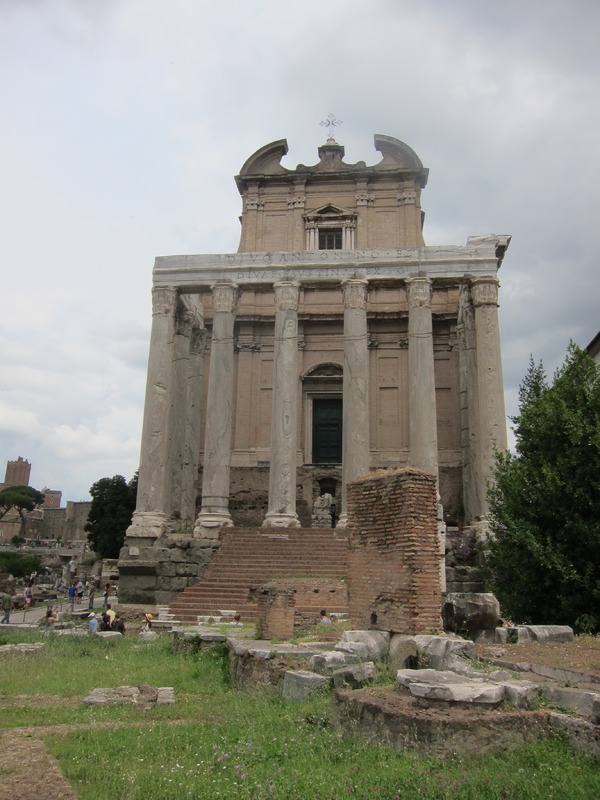Transformation into a Baroque Church

Front Side of the Temple of Antonius and Faustina, 141 A.D.,(Showing the Baroque Facade Constructed by Orazio Torriani).
It is thought that the Temple of Antoninus and Faustina became a church dedicated to St. Lawrence, the patron saint of librarians and the poor, before the eleventh century, though an exact date is not known. St. Lawrence was a deacon of Rome during the third century, and was martyred during the persecution of Christians by Emperor Valerian. Legend has it that St. Lawrence may have been martyred near the temple, but this concept is also not well documented. [1] During its transformation into a church, much of the temple’s interior structure was removed, and the cult statues were likely broken up. In the late fourteenth century, the pediment was completely destroyed, and between 1540 and 1546, the temple’s stairs to the cella and the marble veneer on its left wall were eliminated. By 1602, a baroque façade designed by the architect Orazio Torriani replaced the cella’s original façade. [2] Though these changes to the temple’s original design likely seem horrifying to those who love Roman art and architecture, it is because of its transformation that the temple survived. This practice of Christianization was furthermore not unique to the Temple of Antoninus and Faustina. Monuments like the Column of Marcus Aurelius-which gained a crowning statue of a saint-also illustrate the transformation of Rome from Classical to Christian city. It is possible that changing the temple into a church was meant to evoke the triumph of Christianity over the Romans. [3]
__________________________________________________________________________________________________________________
1. Eric Fulford, “A Temple Through Time,” Archaeology 47 (1994): 58.
2. Gilbert J. Gorski and James E. Packer, The Roman Forum: A Reconstruction and Architectural Guide (Cambridge: Cambridge University Press, 2015): 69-70.
3. Coarelli, “The Restoration of the Column,” in The Column of Marcus Aurelius, ed. Bruno Brizzi (Rome: Editore Colombo, 2008): 78.